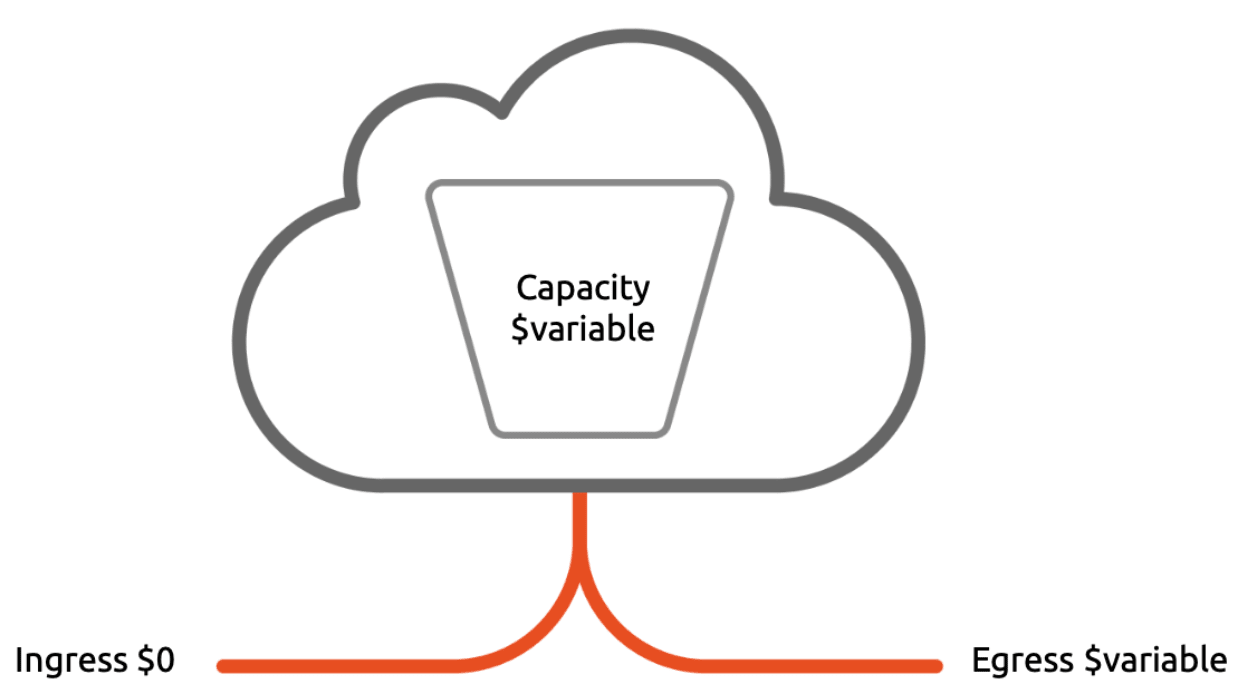Philip Williams
on 16 March 2022

What is cloud adjacent storage?
Put simply, cloud adjacent storage is just a privately owned and operated storage system, within network reach of a cloud provider’s region, but without the pay-as-you-grow and access charges found in public clouds.
Why is cloud adjacent storage a better choice than public cloud storage?
Public clouds were created around the notion of dynamic demand, scaling up and down to right-size resources in line with applications demands. This flexibility is quite appealing to businesses and is fully justified when it comes to computing resources. However, in most cases when storing data in a public cloud, you not only pay for the capacity used but also access charges to read (egress) and write (ingress) to their storage system. Where computing resources are subjected to significant variations over time based on demand, storage is different. Typically, an organization’s capacity usage will grow over time, and rarely shrink.

This pricing model can lead to unpredictable and variable monthly costs, and with ever-changing workloads, it can become very difficult to budget for. If for any reason in the future you decide to leave that provider, and want to bulk export your data, there are again fees associated with reading (egress) all of your data again.
During the pandemic, lots of enterprises flocked to public clouds as the fastest way to respond to changes in the way we were working, many of them are now looking to reduce their cloud footprints.

This is where cloud adjacent storage comes into play. Having your data stored using open-source Charmed Ceph in a neutral location, yet near to multiple public cloud providers unlocks a new level of multi-cloud flexibility. For example, should one provider start offering a specific compute service that is not available elsewhere, you can make your data accessible to that provider without incurring significant access or migration costs, as you would accessing one provider’s storage offering from another provider’s compute offering.
Additionally, you can securely expose your storage system to your users via your own internet connectivity, without incurring public cloud bandwidth fees.
How to choose the best cloud adjacent storage option?
Location
Choosing a colocation facility is typically the first step. A colocation facility is a physical data centre that is securely divided between multiple tenants, allowing each tenant to deploy and operate their own hardware. Not only is it important that physical space and redundant power are adequate, it’s also important to ensure that sufficient network capacity is available, and ideally, the public cloud providers are already on-net, in the facility, or at the least available via one of the internet exchange providers.
Depending on the use case, latency can become important, so the location matters. For the lowest latency you would choose a facility on the same campus, but for many use cases, the same metro area is perfectly fine!
Hardware
The next step would be to choose the hardware that most suits your needs, you could use a proprietary system or you could use open-source Charmed Ceph. Whichever approach you choose, the underlying hardware roughly remains the same. Are you building a storage system that will be actively accessed? Then less dense nodes with smaller drives would be the likely choice. Or if you are building a system that will mostly store archival data, then nodes with dense NL-SAS/SATA disks would be a better choice.
Deployment
Then onto deployment! After racking and stacking the hardware, and configuring the network all that is left is deploying the storage system and making the endpoints available to your users and application.
With the simplicity of MaaS and Charmed Ceph, you can quickly and easily manage the end-to-end deployment and configuration of commodity hardware and open-source Ceph. To find out more about deploying Ceph in this kind of configuration, check out the recent webinar linked below for an in-depth discussion



